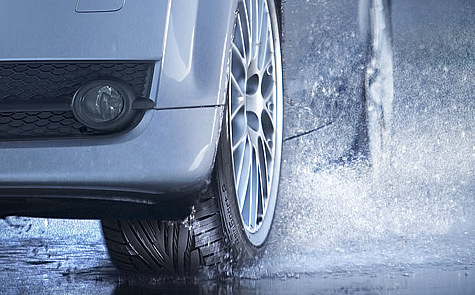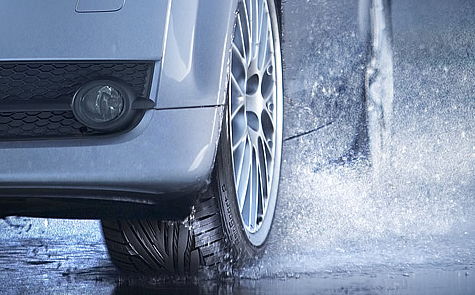[caption caption="solitairehonda.com"][/caption]Aquaplaning/hydroplaning can cause a car or motorcycle to lose control during wet weather. What happens is water accumulates beneath the wheels and causes the vehicle to lose traction. Friction is essential for accelerating and decelerating a car. When water acts as a medium the tire starts to slip and if all wheels start to aquaplane the car becomes an uncontrollable lump of titanium mass until one of the wheels regains traction.
During the rainy season it’s vital to check the tire treads to see if their capable of running through shallow pools of water form on uneven sections of road or highway. It can be done by inserting a coin through the cracks or ‘grooves’ on a tire. If the coin doesn’t go deep enough then that tire is suggested to be changed to ensure safety on the road. The grooves on a tire function in pushing away the oncoming water allowing the car to maintain grip even in wet and rainy conditions.
In Formula 1 racing you may notice at times that the racecars have no grooves and is plain rubber. This type of tire is called a racing slick and is intended to increase the surface area of the tire in hot and dry weather. Grooves are unnecessary when there is no water on the asphalt and compared to racing slick they provide relatively less traction. Since F1 racecars change their tires every couple of laps, a sudden change of weather can be accommodated for (changing type of tire).
[caption caption="exoticspotter.com"]

Traction in racing is a serious concept for winning. Better traction allows the breaks to be more effective so the racecar can go full speed in the straights and brake at the last moment, resulting in a faster time. Initially it was invented for drag racing in the 1950s. Afterwards the tech was applied to every other racing sport. Another type of tread is the one used for off road. Dirt and mud can cause difficult for traction therefore off road tires have wider grooves in order for the car to get a grip on the mud/dirt. However when used on asphalt these off road tires are proven to be inefficient and wear quickly due to less contact patch.
Other than looking at the tire to prevent aquaplaning, we can look at the road. Many car crashes in wet weather are due to ruts that gather rainwater. Ruts are a depression on the surface or road deformation caused by passing heavy vehicles/trucks. Ruts eventually form overtime and are the reason why trucks have strict weight limits. In Germany the autobahn is religiously maintained and large sections of the road are replaced when ruts start to form. This is why the autobahn has a high speed limit during wet weather and has no limit during sunny days. A preferred road for wet weather is a cross slope where the mid-section is slightly higher and water simply slides off to the edges.
https://en.wikipedia.org/wiki/Tread
https://en.wikipedia.org/wiki/Racing_slick
https://en.wikipedia.org/wiki/Aquaplaning
https://en.wikipedia.org/wiki/Rut_(roads)





